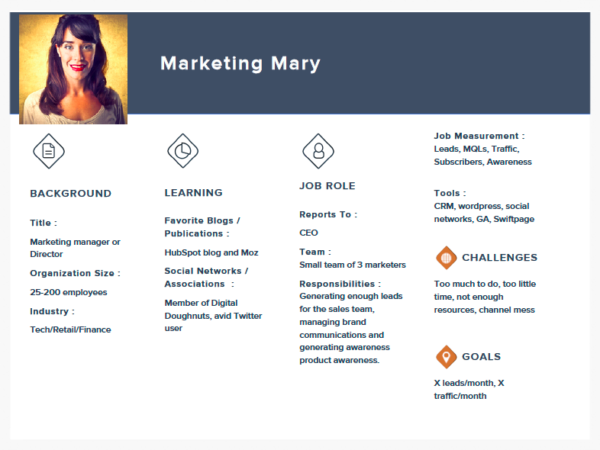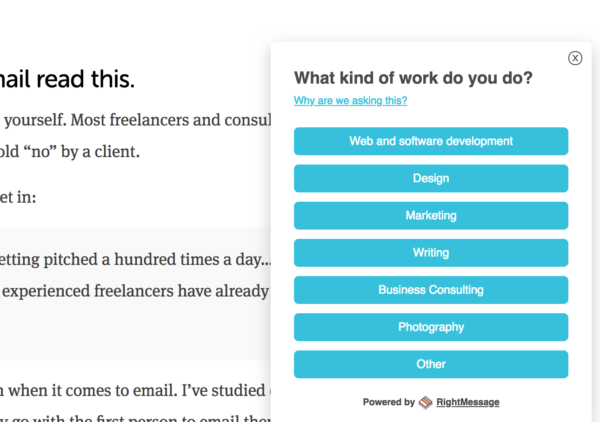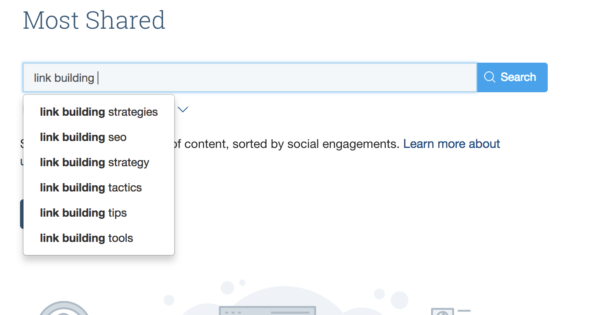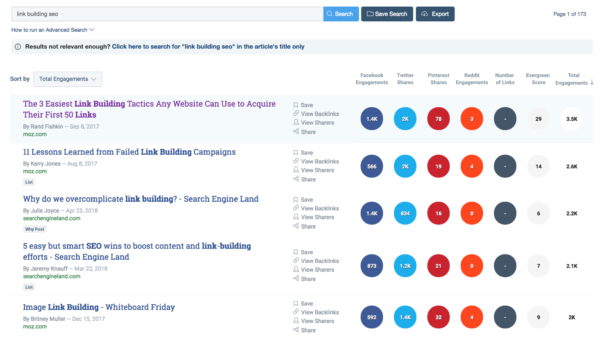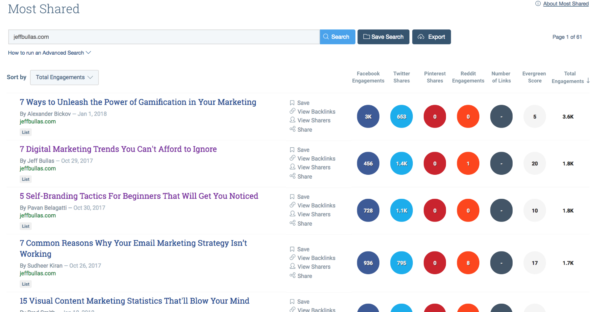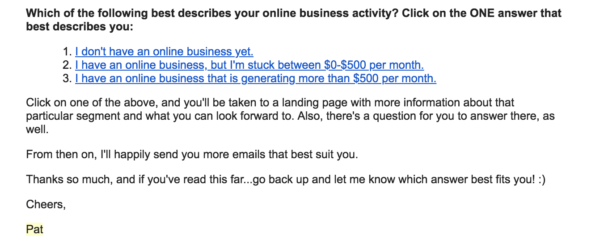In the last decade, content marketing has evolved and become challenging. You can no longer get away with keyword stuffed 300-word articles and web 2.0 backlinks. You also can not ignore the mobile experience of your visitors.
Currently, 91% of B2B brands and 86% of B2C brands use content marketing. However, now it’s all about building a genuine connection with your customers and creating content that sparks engagement.
To streamline your workflow, let me share five powerful tools. I will also show you how to leverage them in your content marketing to increase your effectiveness.
1. Make My Persona
Before you begin marketing, the first question you should ask yourself is: Who is my ideal customer?
To build a robust strategy, you need clarity on your audience’s likes, hopes, dreams, and aspirations.
Doesn’t it make practical sense?
If you have clarity on how a day looks in your customer’s life, then you can create content that finds a place in their life.
Make My Persona is a persona creation tool by Hubspot. It asks you 19 simple questions to build a pictorial representation of your ideal customer.
The final version will contain information on their background, challenges, goals, the tools they use, their favorite publications, and the like.
Image credits: hubspot.com
Note that Make My Persona is helpful in organizing information about your customer. If you don’t have the information, then you first need to interact with your prospects and gather insights.
One-on-one meeting with a few of your most engaged customers is ideal to understand them. Else, you can also conduct online surveys using a tool like Qualaroo. For example, Double Your Freelancing employs slide-ups in the right sidebar to collect information from its readers.
The last resort is plugging your competitor inside at intelligence tool like Alexa.
Remember that, as you launch new products and pivot, your business evolves. Hence, your ideal customer is not a static entity. You need to revisit your persona to ensure it’s up to date.
2. BuzzSumo
A cornerstone of every robust content marketing strategy is creating engaging content. Instead of reinventing the wheel, a better way to approach it is by finding ideas that have proven demand.
Buzzsumo is a nifty resource to find the top performing content on social media on any topic. When you plug a keyword into the tool, it starts autocompleting with a few relevant suggestions. Here are the keywords suggested when I type “link building.”
When I searched for the most shared articles on “link building SEO,” here are the top results returned.
The top two articles are: easiest link building tactics and failed link building campaigns. Other articles also revolve around beginner link-building strategies.
We can also see that three articles out of five are listicles.
If ‘link building for SEO’ is relevant to your brand, then it makes sense to write a beginner-friendly listicle on the subject.
Another cool way to use Buzzsumo is by plugging a competitor’s website to dissect their top content. For instance, here are the most shared articles at JeffBullas.com in the last year.
We can see that the audience at Jeff Bullas feasts on diverse subjects: digital marketing, gamification, self-branding, email marketing, and visual content marketing.
With the paid version of Buzzsumo, you can use advanced features like finding relevant influencers that can amplify the reach of your content. If influencer marketing is a crucial component in your marketing, then it’s a useful add-on.
3. Seva
When it comes to content distribution, social media and blogs lag far behind email. A CMI report cited that 79% of B2B marketers and 74% of B2C marketers consider email as their most successful distribution channel.
However, the number of emails a user receives in a day have exploded. You can no longer afford to send irrelevant emails. It doesn’t equate to turning down the frequency of your emails. Instead, send personalized and targeted messages by creating segments of your audience.
Seva, (formerly ConvertKit) is an email marketing platform with capabilities to send emails based on your subscribers’ preferences. You can send super targeted emails to your audience by using its powerful features like segmentation, tags, and sequences.
When a new prospect joins your email list, you can ask questions and get them to self-tag. For instance, here’s an excerpt from the first email Pay Flynn used to send to his visitors.
Pat questions a new subscriber’s online business activity. By clicking on the appropriate link, they provide a data point to Pat – thereby, the subscriber will receive relevant content to their condition.
If you’re in a hurry, you can quickly slap together a responsive landing page and host it at ConvertKit.
If you feel confused and can’t make your way around ConvertKit, then it has an extensive knowledge base with user guides to onboard you.
4. Google Analytics
Many content creators write on whatever subject they like. Most content marketing campaigns are based on instinct and intuition. Without a vision and absence of performance metrics, you will likely fail to measure the impact of your efforts.
What’s a more effective way to make your content marketing more consumer-centric?
By relying on data.
87% of companies believe that data is the most underused asset within marketing.
Google Analytics (GA) is a free analytics solution with insane capabilities to draw insights about your visitors. To begin collecting data on your users’ behavior using GA, you need to copy and paste a code in your website’s header.
Once you’re set, then you can begin your analytical journey. Here’s how to set goals inside Google Analytics. Next, I recommend you to use these seven key GA reports to understand the effect of your marketing efforts.
If you like, then you can even top Google Analytics (GA) with a tool like Leadfeeder. It uses GA data to fetch insights into your lead generation efforts.
When measuring your performance, remain careful to not fall for vanity metrics. In 2018, page views, rankings, and traffic alone don’t suffice to measure your content marketing efforts.
The buzzword for 2018 is ‘engagement.’ The relevant metrics to measure the stickiness of your content is the average on-page time, your bounce rate, and the number of pages a user consumers per session.
5. Facebook Ads
To kick off your content marketing, you researched subjects with audience demand and created high-quality content. With the explosion of content creation, unfortunately, publishing content is not sufficient. You also need to take the responsibility of getting your content “seen.”
In 2018, distributing your content through appropriate channels is incredibly important. Niche forums and online communities like Quora and Reddit can help in connecting with your audience.
However, you can’t overlook Facebook – it’s the biggest social network in the world. While the organic reach on the platform has plummeted to an all-time low for brands, paid advertising provides you with insane targeting functionalities. Through its partnerships, Facebook offers an average of 1500 data points per person.
Further, as opposed to expensive Google Adwords, Facebook ads can give you a crack at advertising to your target audience for as low as $5 per day. To get started with Facebook ads, look at these five examples of small businesses.
An important aspect to keep in mind while running ads is to allocate your budget on content that’s performing well. If you find a paid campaign performs well early on, then you should increase your spending quickly to expand your reach.
Conclusion
You can no longer bluff. Users are tired of seeing salesy messages in the name of value-adding content. The only way to engage them is by creating genuinely helpful and entertaining content.
Instead of complicating content marketing, document your strategy and use the right tools – you will likely see it grow your business in 3 to 6 months.
Which of the five tools do you plan to use in your content marketing strategy for this second half of the year? Let me know in the comments.

